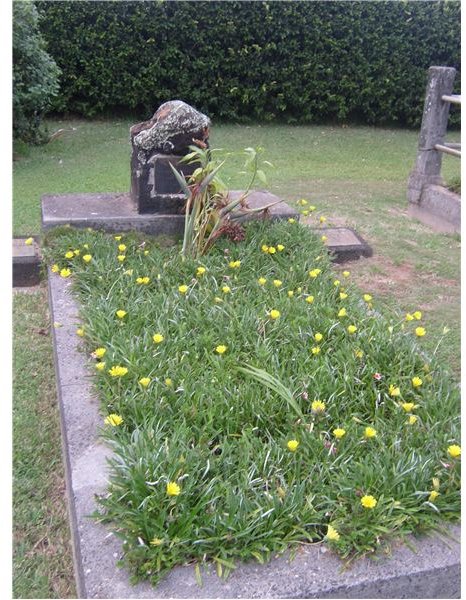"The Story of an Hour" Teacher's Guide: Teaching Ideas & Quiz
Plot and Characterization
You’d probably be better off reading the actual story. It’s only 1,009 words, but I told you I’d explain the plot as part of the guide, so here it is:
Richards tells Mrs. Mallard that her husband dies in a train wreck. He wants to be the one to break the news to her because Mrs. Mallard has heart problems. We find out soon enough that these heart problems are more than just physical. We also find out that Richards needs to keep his big mouth shut (more on that in a second).
Mrs. Mallard cries…a lot. She goes to her room, plops down on a chair, and stares out the window. She struggles to suppress her feelings, kind of like that time you drank a gallon of milk in an hour or ate 33 hard boiled eggs for dinner and tried to suppress vomit (you’ve never experienced it? Try it and then finish the rest of this summary later.). Her feelings are that of joy, that of excitement about being free from her husband’s rule. She contemplates how wonderful her life will be.
Her nagging sister Josephine, not realizing that her ingrate sister is celebrating her good husband’s death, summons her downstairs. As the two women and Richards discuss matters at the door, Mr. Mallard walks in. Mrs. Mallard has a heart attack and dies.
Mrs. Mallard dies from what the doctors call “the joy that kills.”
Lesson Ideas
- Setting in “The Story of an Hour” - Understanding the theme of the story requires an understanding of setting in “The Story of an Hour.” Most students could probably figure out that the story takes place in one hour in the Mallard home. They probably do not understand the social status of women in the late 19th-century. Instruct students to construct a timeline of women’s rights. I’ve got a lesson plan right here.
- Teach how to annotate a short story - Annotating literature allows students to explore aspects of a literary work that interests them. Because “The Story of an Hour” is only 1,009 words and can be copied on to one slice of paper, it is ideal for annotating. Here are instructions for annotating literature.
- Irony is one of the hallmarks of Kate Chopin’s stories. Analyze irony in “The Story of an Hour” with this lesson plan (I realize it’s actually a lesson plan for Romeo and Juliet, but it can be adapted quite easily). If you really like irony (and who doesn’t), here’s a list of short stories for teaching irony that you can use for comparison purposes.
- Here are creative writing ideas: (1) rewrite the story from Brently Mallard’s point of view; (2) continue the story, telling the events of the next hour; (3) modernize the story.
I threw in a bonus “Story of an Hour” quiz because I like you so much and want you to come back again and again, kind of like Mr. Mallard, except I don’t resent you and wouldn’t be relieved if you died in a train crash. The answers to this “Story of an Hour” quiz are in bold type.
“The Story of an Hour” Quiz

- From what ailment does Mrs. Mallard suffer?
- kidney failure
- heart trouble
- detached retinas
- H1N1
- What might Mrs. Mallard’s ailment symbolize?
- her inability to see things as they are
- her inability to filter out less important things in life
- her unhappiness and troubling emotions
- a raging desire for pig flesh
- Who breaks the news of Mr. Mallard’s death?
- Richards
- Roberts
- Josephine
- Friar John
- The following passage is an example of _________ irony: “Louise, open the door! I beg; open the door–you will make yourself ill. What are you doing, Louise? For heaven’s sake open the door.”
- situational
- dramatic
- verbal
- holistic
- The following passage is an example of _________ irony: “Some one was opening the front door with a latchkey. It was Brently Mallard”
- situational
- dramatic
- verbal
- kookalooka
- The following passage is an example of _________ irony: “When the doctors came they said she had died of heart disease–of the joy that kills.”
- situational
- dramatic
- verbal
- feral
- What is significant about the story’s setting?
- The story’s set in a time period that afforded women very few rights.
- It takes place in a large house.
- The story encompasses one hour.
- The setting makes no difference.
- How could we best characterize Brently Mallard
- He is an abusive husband who deserves to die in a fiery train wreck.
- He’s a conniving man who set up the train wreck story so he could scare his wife and kill her.
- He’s a typical husband in the late 19th-century.
- He’s an adulterer.
- How would the story change if it were written today?
- There’s no way Mallard leaves the house without permission.
- Richards calls Mallard on his cell phone and realizes he’s alive.
- Mrs. Mallard smashes Mr. Mallard’s SUV with a golf club and demands a divorce.
- Richards tells Mrs. Mallard that her husband’s dead in order to get her in bed. It works. Mallard walks in on the two in a passionate embrace and Mrs. Mallard dies of a heart attack.
- In what season does the story take place and why is it significant? * The story takes place in Spring and symbolizes a new beginning for Mrs. Mallard. * The story takes place in Summer and symbolizes the burning hot love Mrs. Mallard has for her husband. * The story takes place in Winter and symbolizes that everything dies.
This post is part of the series: Short Story Teacher Guides
Here’s some help with teaching short stories.
- “The Story of an Hour” Teacher’s Guide
- Teacher Tips for “An Occurrence at Owl Creek Bridge”
- Teacher’s Guide to “The Celebrated Jumping Frog of Calaveras County” by Mark Twain
- Teacher’s Guide for the Cask of Amontillado
- The Cask of Amontillado Discussion Questions
